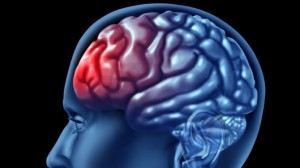Chronic Headaches = Brain Loss 
Although most people get the occasional headache, there are people who experience headaches for more than 15 days each month. They are said to have chronic headaches. It is estimated that between three to five percent of people worldwide have chronic headaches. There are several subtypes of chronic headaches, such as chronic migraine, chronic tension headaches, medication overuse headache, and hemicrania continua (a headache that only affects one side of the face and head).
Researchers examined the brains of people with chronic headaches and compared them with people who didn’t have headaches. The researchers found that patients without headaches had no changes in brain tissue, but patients with chronic headaches did.
And, the longer the patients had their headaches, the more tissue was lost in the brain.
Migraines are more than just severe headaches. Migraines are in a class by themselves. The only thing they have in common with headaches is the head pain. A migraine usually, but not always, involves a severe, unilateral (one-sided) headache that is often described as pulsing or throbbing. In addition to the pain, many people with migraines also become very sensitive to light (photophobia), sounds, and odors. They may also be nauseous and vomit.
Many studies have been done on people who have migraines. This research has shown that there are changes in the brains of migraineurs, much like those with other chronic pain. Although there hasn’t been a connection made between the changes in the brain as a result of the pain, researchers have found that these changes may actually have a part in causing the migraine pain.
Spine University’s Guide to Neuroplasticity and Chronic Pain cites Dr. Rocca’s study of 16 patients with migraines and they also found changes in their brain tissue. Two other studies compared patients with migraines to control subjects who didn’t have migraines. Both studies also found brain changes in the migraineurs. When interpreting the study data, Rocca’s group suggested that the changes could have been caused by the repeated pain attacks on the brain.
To learn more about upper cervical and headaches including migraines download our free e-book below.
Upper Neck Misalignments and Changes in Fluid Flow
When the upper cervical spine is misaligned the blood and cerebrospinal fluid flow is changed to and from the brain. This is being demonstrated with Phase Contrast MRI on the arteries and veins from the brain to the body. Altered fluid flow can change the brain. Our brain needs proper fluids in order to function properly. The longer the misalignment has been present the more damage is done.
If the upper neck has become misaligned due to accidents and injuries than a change is currently happening in the brain. The brain research is showing how those with chronic tension headaches and migraines are suffering brain damage as a result of their headaches.
Do you see the connection?
Misalignment causes altered blood and CSF flow, the brain needs blood and cerebrospinal fluid in order function properly, without proper venous drainage many people begin to suffer with headaches. Correct the cause by realigning the upper cervical spine with a precise upper cervical procedure such as upper cervical and the blood flow begins to change. Headaches frequently go away and the brain begins getting proper blood flow again so that it can heal.
For many people it is as simple as that!
To schedule an upper cervical evaluation to see if you can find relief from your headaches in Apex simply click the button below.

